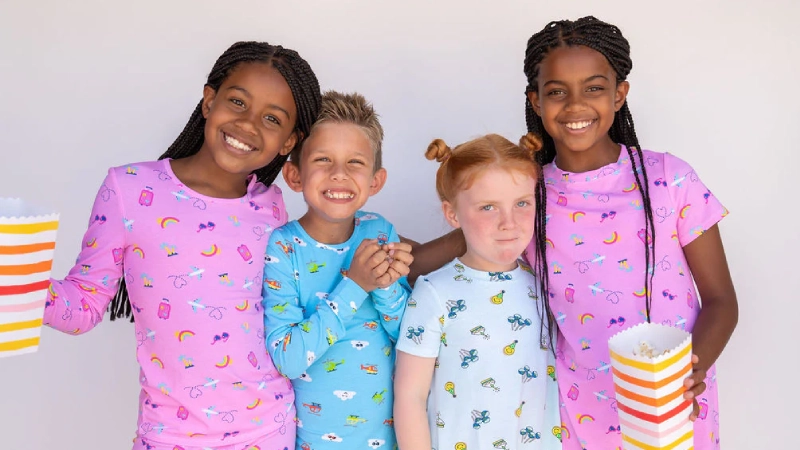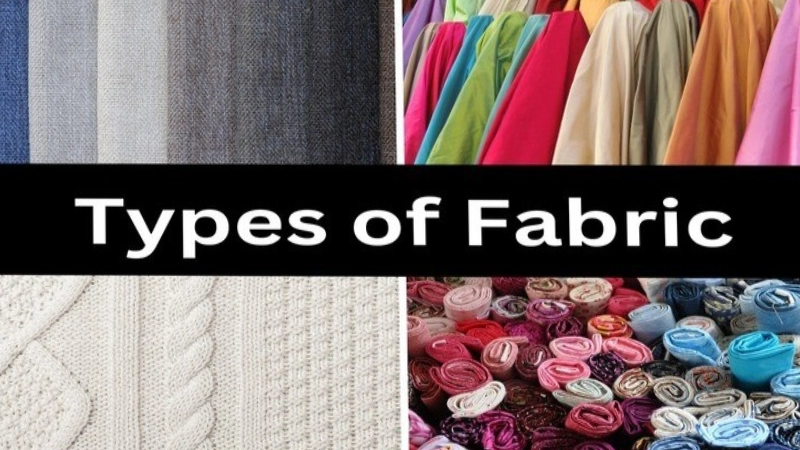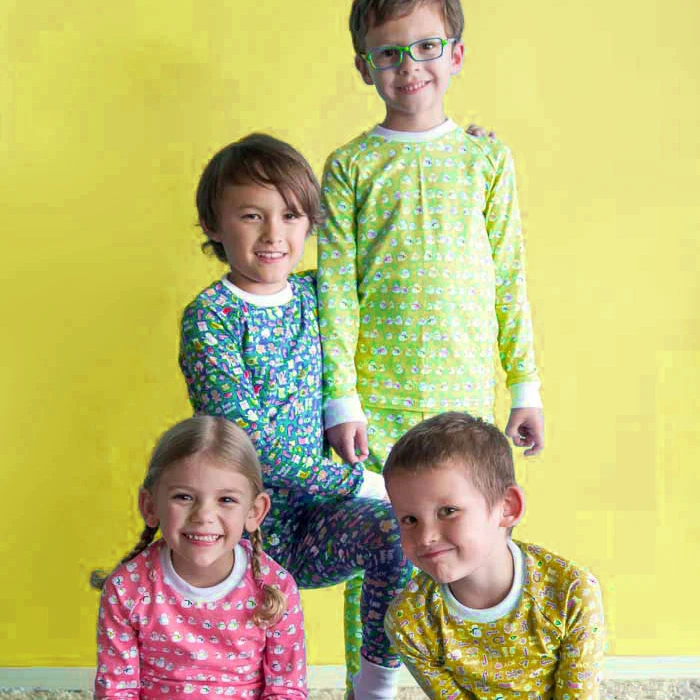Is the Pjs for Kids really necessary, or just another cute clothing item? This article explores why the right pajamas can improve your child’s comfort, sleep quality, and bedtime routine.

Why Kids’ Pajamas Matter
Let’s be honest—if you’re a parent, you’ve probably faced the pajama dilemma more than once. You stand in the store or scroll online, staring at dozens of adorable options. Some are dirt cheap. Others cost more than your own sleepwear. So you wonder: are kids’ pajamas really worth it?

As a professional sleepwear manufacturer, we’ve worked with thousands of retailers and parents over the years. We’ve tested, refined, and delivered pajamas that balance comfort, safety, and durability. What we’ve learned goes far beyond cute prints. The right pajamas can improve sleep quality, support skin health, and even enhance bedtime routines.
According to pediatric sleep studies and guidelines from the American Academy of Pediatrics (AAP), comfortable and breathable sleepwear plays a key role in maintaining optimal sleep environments for children. Beyond temperature control, pajamas that are designed with kids in mind help them wind down and associate bedtime with something positive. And that’s just the beginning.
Let’s explore the 11 comfort and style secrets that reveal why quality kids’ pajamas are an investment, not an afterthought.
Comfort Comes First: Fabric Choices
Comfort is non-negotiable when it comes to kids’ pajamas. Scratchy, sweaty, or stiff materials just won’t do. And as any parent knows, if your child is uncomfortable, no one sleeps well.
Cotton Pajamas
Cotton is a long-standing favorite—and for good reason. It’s breathable, soft, and gentle on the skin. Especially for kids with eczema or sensitive skin, natural cotton pajamas can help reduce irritation and rashes. Plus, cotton is lightweight and absorbs moisture, which is key for temperature regulation during sleep.
From our experience, high-thread-count cotton offers a noticeable difference. Many of our wholesale clients report fewer customer complaints and higher repeat purchases when they stock our 100% combed cotton lines. According to Wikipedia, cotton has been used in textiles for over 7,000 years due to its comfort and versatility.
Bamboo Fabric and Its Growing Popularity
If you haven’t tried bamboo pajamas yet, you’re in for a treat. Bamboo viscose is ultra-soft—think buttery smooth—and naturally hypoallergenic. It’s especially great for warm climates or sweaty sleepers because it wicks moisture better than cotton.
Eco-conscious parents also love bamboo for its sustainability. Bamboo grows rapidly with minimal water and no pesticides. As manufacturers, we’ve seen demand for bamboo fabric rise over 40% in the last three years. Many of our bulk buyers choose bamboo lines specifically for premium or boutique collections.
Polyester and Fleece: Pros and Cons
Synthetic fabrics like polyester and fleece definitely have a place, especially in colder months. They’re durable, warm, and often more affordable. Fleece pajamas, in particular, are a winter staple. However, they can sometimes trap heat and moisture, making them less ideal for kids prone to night sweats.
Parents often ask us whether polyester pajamas are safe. The short answer is yes, especially when they meet industry standards for flame resistance. However, if your child has sensitive skin, synthetic blends may cause mild irritation, so we always recommend doing a quick patch test or opting for lined versions.
Is the Pjs for Kids Safety First: Flame-Resistant or Snug Fit?
Here’s a fact every parent should know: In the U.S., children’s sleepwear must comply with the Consumer Product Safety Commission (CPSC) regulations. This means it must either be flame-resistant or snug-fitting to reduce fire hazards. You’ll notice these warnings on all our product tags.
Flame-resistant pajamas are typically made with polyester or treated fabrics. While some parents worry about chemical treatments, the materials used today are much safer and more advanced than in previous decades. Our company only uses certified, compliant flame-resistant fabrics that meet both U.S. and EU safety regulations.
On the other hand, snug-fit pajamas are usually made of stretchy cotton blends and rely on the fit rather than flame resistance to offer protection. These are ideal for parents seeking natural materials.
From a manufacturing standpoint, ensuring compliance isn’t just about avoiding legal issues—it’s about protecting children. We regularly update our production lines to meet the latest ASTM F1816 standards. If you’re buying from an unknown brand, always check for CPSC compliance labels.
Size and Fit: How to Choose the Right One

Finding the right size isn’t always easy. Kids grow fast, and sizing across brands can vary. Still, a well-fitting pajama set is crucial for safety and comfort.
Age-Based Sizing Charts
| Age | Height Range | Typical Size |
|---|---|---|
| 2–3 years | 33″–38″ (84–96 cm) | 2T–3T |
| 4–5 years | 39″–44″ (99–112 cm) | 4T–5T |
| 6–7 years | 45″–49″ (114–124 cm) | 6–7 |
Most pajama sizes are labeled by age, like 2T, 4T, or 6. But the best approach is to measure your child’s height and weight. We include precise sizing charts with every shipment, and we recommend our retailers educate customers to avoid returns due to incorrect sizing.
In our experience, matching by height offers the best results. For example, if your child is 39 inches tall, go with the size that covers that height range, even if they’re technically younger or older.
When to Size Up
Some signs your child needs the next size up include tight wrist cuffs, high ankle exposure, or difficulty putting the pajamas on. It’s tempting to size up for longevity, but don’t overdo it—especially with snug-fit designs. Oversized sleepwear can increase fire risks and cause tripping.
Our retail clients tell us that sizing issues account for over 60% of returns, so getting it right the first time is well worth the effort.
Seasonal Pajamas: What to Wear When

Kids aren’t always great at telling us when they’re too hot or too cold at night. That’s why seasonal pajamas make such a difference.
Winter Pajamas
For chilly months, consider thermal cotton, flannel, or fleece. Footed pajamas are especially helpful for toddlers who kick off blankets. Our winter collection features brushed flannel with enclosed feet and zipper closures—a hit among parents in colder regions.
We’ve received glowing feedback from customers in Canada and northern U.S. states who say our fleece-lined PJs are game-changers during snow season. Layers are also a good strategy: a cotton base layer plus a fleece robe works wonders.
Summer Pajamas
In the summer, breathability is key. Lightweight cotton and bamboo sets, especially short-sleeve tops with shorts, help regulate body temperature and prevent night sweats.
Several pediatricians we work with recommend natural fibers for summer wear to reduce heat rash risks. In fact, studies have shown that children sleep more soundly when they aren’t overheating—a reminder that seasonal fabrics aren’t just a luxury, but a necessity.
Let’s face it—kids are visual creatures. A pajama set with their favorite cartoon character or a glow-in-the-dark pattern can actually help bedtime go more smoothly.
Bright colors and familiar characters make sleepwear exciting. We’ve heard from parents who swear their child went from bedtime battles to eager dressing thanks to one beloved unicorn pajama set. But there’s more: psychologists note that consistent bedtime rituals, including wearing special pajamas, can cue the brain for rest.
As designers, we take this seriously. Our team includes early childhood educators who help us choose patterns that are not just cute, but also age-appropriate and engaging. We also offer gender-neutral and inclusive prints—something many of our retail buyers specifically request.
Organic and Hypoallergenic Options
When it comes to children’s sleepwear, choosing organic and hypoallergenic fabrics isn’t just a trend—it’s a thoughtful decision for your child’s health and comfort. As a sleepwear manufacturer, we’ve observed a growing demand for these options, and for good reason.
Organic Fabrics:
Organic cotton is cultivated without the use of harmful pesticides or synthetic fertilizers, making it a safer choice for children’s sensitive skin. This natural approach reduces the risk of skin irritations and allergic reactions. Parents often report that their children sleep more comfortably in organic cotton pajamas, attributing it to the fabric’s softness and breathability.
Hypoallergenic Materials:
Bamboo fabric stands out as a hypoallergenic option. Its natural properties resist dust mites and mold, common allergens that can disrupt a child’s sleep. Additionally, bamboo’s moisture-wicking ability keeps the skin dry, further reducing the likelihood of irritation.
Industry Standards and Certifications:
It’s essential to look for certifications like GOTS (Global Organic Textile Standard) when selecting organic sleepwear. These certifications ensure that the fabric meets strict environmental and social criteria throughout its production process.
Customer Feedback:
Retailers who stock our organic and hypoallergenic lines often share positive feedback from parents. Many note improvements in their children’s sleep quality and a decrease in skin-related issues.
Incorporating organic and hypoallergenic pajamas into your child’s bedtime routine is more than a comfort choice—it’s a commitment to their well-being.
Matching Pajama Sets for Families
Family matching pajama sets have become increasingly popular, turning bedtime into a fun and bonding experience. As manufacturers, we’ve embraced this trend, offering a variety of coordinated designs that cater to all family members.
The Appeal:
Matching pajamas aren’t just for holiday photos; they create a sense of unity and tradition. Parents have shared heartwarming stories of their children looking forward to “pajama nights,” where the family dons matching sets for movie nights or storytelling sessions.
Design Considerations:
Our design team focuses on creating patterns that appeal to both children and adults. From whimsical prints to classic designs, we ensure that each set is comfortable and stylish. We also consider seasonal themes, offering collections that align with holidays and special occasions.
Quality and Comfort:
Ensuring that each family member experiences the same level of comfort is paramount. We use consistent fabric quality across all sizes, from toddler to adult, so everyone enjoys the softness and durability of our pajamas.
Market Response:
Retailers report that family pajama sets are among their best-selling items during the holiday season. The demand often extends beyond traditional holidays, with customers seeking matching sets for birthdays, family reunions, and other celebrations.
Embracing the trend of family matching pajamas adds a touch of joy to everyday routines, making bedtime a cherished family affair.
Durability & Washability: What to Expect
Durability and ease of care are crucial factors when selecting children’s pajamas. Parents need sleepwear that withstands frequent washing and the rigors of active children.
Fabric Strength:
We prioritize fabrics known for their resilience. For instance, high-quality cotton and bamboo blends maintain their integrity after multiple washes. These materials resist pilling and fading, ensuring the pajamas look and feel new for longer.
Construction Quality:
Our manufacturing process includes reinforced seams and sturdy stitching, reducing the likelihood of tears and fraying. Elastic waistbands and cuffs are designed to retain their shape, providing a consistent fit over time.
Care Instructions:
To maximize longevity, we provide clear care labels on all our products. Simple guidelines like washing in cold water and tumble drying on low help maintain fabric quality. Parents appreciate the low-maintenance aspect, as it fits seamlessly into busy lifestyles.
Customer Testimonials:
Feedback from our clients often highlights the durability of our pajamas. One parent noted, “After countless washes, the pajamas still look vibrant and feel soft. They’ve become our go-to choice for sleepwear.”
Investing in durable and washable pajamas ensures that children remain comfortable night after night, and parents enjoy the value of long-lasting products.
Budget vs. Premium: What’s the Difference?
Understanding the distinction between budget and premium pajamas helps parents make informed choices that balance cost and quality.
Material Quality:
Budget pajamas often use lower-grade materials, which may feel rougher and wear out quickly. In contrast, premium pajamas utilize high-quality fabrics like organic cotton or bamboo, offering superior softness and longevity.
Design and Fit:
Premium options typically feature better tailoring, ensuring a comfortable and secure fit. Thoughtful design elements, such as tagless labels and reinforced seams, enhance the overall wearing experience.
Safety Standards:
Higher-end pajamas are more likely to meet stringent safety certifications, providing peace of mind regarding flammability standards and chemical use.
Long-Term Value:
While premium pajamas come with a higher upfront cost, their durability often results in long-term savings. Parents report that these pajamas outlast multiple budget pairs, making them a cost-effective choice over time.
Customer Insights:
Retailers have observed that customers who initially opt for premium pajamas often return for repeat purchases, citing satisfaction with the product’s quality and performance.
Choosing between budget and premium pajamas depends on individual priorities, but understanding the differences ensures that parents select the best option for their family’s needs.
Where to Buy the Best Kids’ Pajamas
Finding reliable sources for quality children’s pajamas is essential for ensuring comfort, safety, and value.
Specialty Retailers:
Stores specializing in children’s clothing often offer a curated selection of pajamas that meet high standards for fabric quality and safety. Staff at these stores can provide personalized recommendations based on your child’s needs.
Online Marketplaces:
E-commerce platforms like Amazon and Etsy host a variety of brands, including those focusing on organic and hypoallergenic options. Reading customer reviews and checking for certifications can guide your choices.
Brand Websites:
Purchasing directly from reputable brands ensures access to their full range of products and any available warranties or satisfaction guarantees. Brands often provide detailed information about their materials and manufacturing processes.
Friendtex,
We have been focusing on the production of pajamas in China for more than ten years, supplying designs and production to major domestic and foreign brands
Local Boutiques:
Supporting local businesses can lead to discovering unique pajama designs and personalized customer service. Many boutiques collaborate with independent designers, offering exclusive patterns and styles.
Pajamas and Bedtime Routines
Integrating pajamas into bedtime routines can significantly impact a child’s sleep quality and overall well-being.
Establishing Consistency:
Wearing pajamas signals to children that it’s time to wind down, creating a consistent cue for bedtime. This routine helps regulate their internal clocks, making it easier to fall asleep.
Comfort and Security:
Soft, well-fitting pajamas provide physical comfort, which can translate into emotional security. Children often associate their favorite pajamas with feelings of safety and relaxation.
Encouraging Independence:
Allowing children to choose their pajamas fosters independence and decision-making skills. This involvement can make bedtime more enjoyable and reduce resistance.
Positive Associations:
Incorporating fun elements, like favorite characters or matching family sets, turns bedtime into a positive experience. These associations can lead to a more cooperative and peaceful nighttime routine.
Parental Feedback:
Many parents report that consistent pajama routines lead to smoother bedtimes and improved sleep patterns. One parent shared, “Since we started our bedtime ritual with special pajamas, our child looks forward to getting ready for bed.”
Emphasizing the role of pajamas in bedtime routines underscores their importance beyond mere clothing, highlighting their contribution to healthy sleep habits.
FAQs
How often should I replace my child’s pajamas?
You should replace your child’s pajamas every 6 to 12 months or sooner if they show signs of wear, fading, or shrinking. Children grow quickly, so the fit is crucial—tight pajamas may become uncomfortable or even unsafe. Also, if the fabric loses softness or elasticity, it’s time to upgrade for comfort and hygiene.
Are bamboo pajamas safe for children with allergies?
Yes, bamboo pajamas are generally considered safe for children with allergies. Bamboo fabric is naturally hypoallergenic, breathable, and resistant to dust mites. It’s also gentle on sensitive skin, making it a great option for kids with eczema or other skin conditions. Just ensure the pajamas are certified organic and chemical-free to avoid irritation.
Do organic pajamas shrink after washing?
Organic pajamas can shrink slightly after the first wash, especially if they’re made from 100% cotton. To minimize shrinkage, wash them in cold water and air dry or use a low-heat setting. Pre-shrunk organic fabric is a safer choice if you’re worried about sizing after washing.
Can matching family pajamas be worn year-round?
Yes, matching family pajamas can definitely be worn year-round, especially if you choose breathable, season-appropriate fabrics like cotton or bamboo. While some sets are designed for holidays, many brands now offer styles suitable for every season—think short sleeves for summer and flannel for winter—so your family can stay coordinated all year.
Are premium pajamas worth the higher cost?
Premium pajamas are often worth the higher cost due to their superior materials, durability, and comfort. They’re usually made from breathable, sustainable fabrics that last longer and feel softer on the skin. Plus, better stitching and design mean fewer replacements over time, making them a worthwhile investment in your child’s comfort and sleep quality.
Conclusion
Investing in quality pajamas for your children goes beyond aesthetics. It’s about ensuring their comfort, safety, and well-being. From choosing the right fabrics to understanding the importance of fit and design, every aspect contributes to better sleep and happier bedtime routines.
As a sleepwear manufacturer, we’ve seen firsthand the positive impact that well-made pajamas have on families. They foster bonding, encourage healthy sleep habits, and provide peace of mind for parents.
So, the next time you’re considering pajamas for your child, remember that it’s more than just sleepwear—it’s an investment in their health and happiness.


